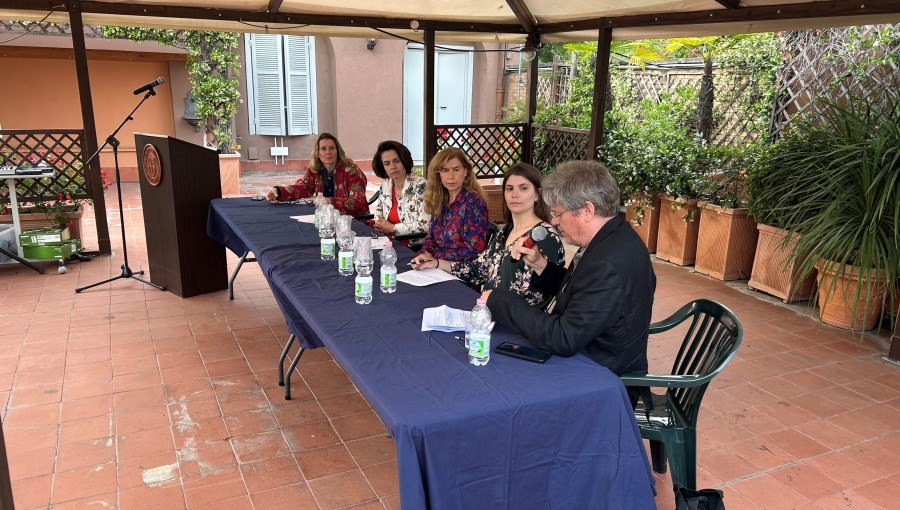Professor Riccardo Maiolini on Fixing Information Asymmetry
John Cabot University’s Management Professor Riccardo Maiolini presented “Information Asymmetry and Signaling Theory” in Professor Alessandra Grego’s EN 399 Introduction to Narrative Studies class on March 28, 2018.
According to Professor Maiolini, information asymmetry, the knowledge gap between a potential seller and the buyer, occurs when one party has more information than the other. This can be avoided by “signaling,” a term used in economics that means conveying information in a plausible manner. Professor Maiolini mentioned how pitches are a great example of signaling as they provide information about a problem, solution, prototype, market dimension, customers, and project budget in a strictly limited time period.
Professor Maiolini further stressed the importance of the narrative styles used in signaling, pointing out that different styles have different effects on people. He also highlighted the role narration has in entrepreneurship. He suggested that skillful storytelling is fundamental since attracting and convincing customers is at the core of business.
Crowdfunding was another topic discussed at the lecture. It is the process of raising various amounts of money from significant numbers of people to fund projects. Professor Maiolini argued that the Church is the earliest example of crowdfunding, since the practice of selling indulgences consisted in persuading people to give money for the cause of remission of sins.
Professor Maiolini then talked about Kickstarter, the most famous online crowdfunding platform. It currently holds about 95.000 campaigns and Pebble Time is the most funded one. Launched in 2012, Pebble Time was a smart-watch startup that managed to gather $20,338,986.
Professor Maiolini demonstrated three research examples on crowdfunding narratives to conclude his lecture. The first one was a study conducted by Stephan Manning and Thomas A. Bejarano in 2017. They identified two narrative styles used in crowdfunding: “results-in-progress,” descriptions of the fundraiser’s experience featuring concrete results, and “ongoing journeys,” descriptions of a vision or a long-term perspective. Professor Maiolini explained that the best results are obtained when an experienced fundraiser uses the “ongoing journeys” narrative technique. Professor Grego commented that this is possible due to a strong establishment of “ethos,” which means “credibility” in literature.
The second study was based on the Word Frequency Counter and it reveals that choosing the most used words in the fundraising campaign results in a higher chance to raise more money.
The last research Professor Maiolini talked about was grounded in the Linguistic Category Model (LCM) which is made up of five categories: Descriptive Action Verbs (DAV), Interpretative Action Verbs (IAV), State Action Verbs (SAV), State Verbs (SV), and Adjectives (ADJ). The study proved that, in order to build an effective narration, the fundraiser should avoid using too many words from the DAV category.






